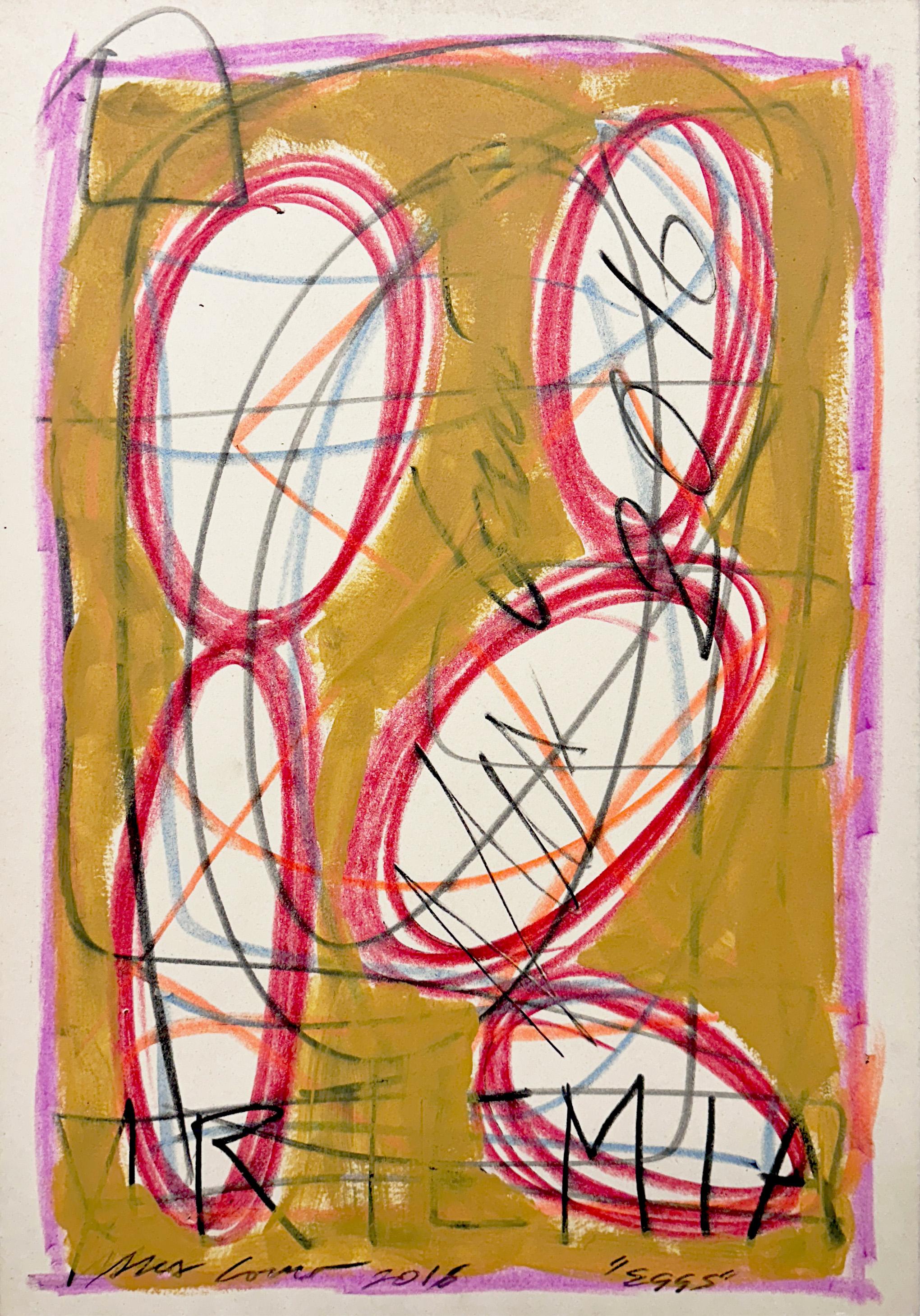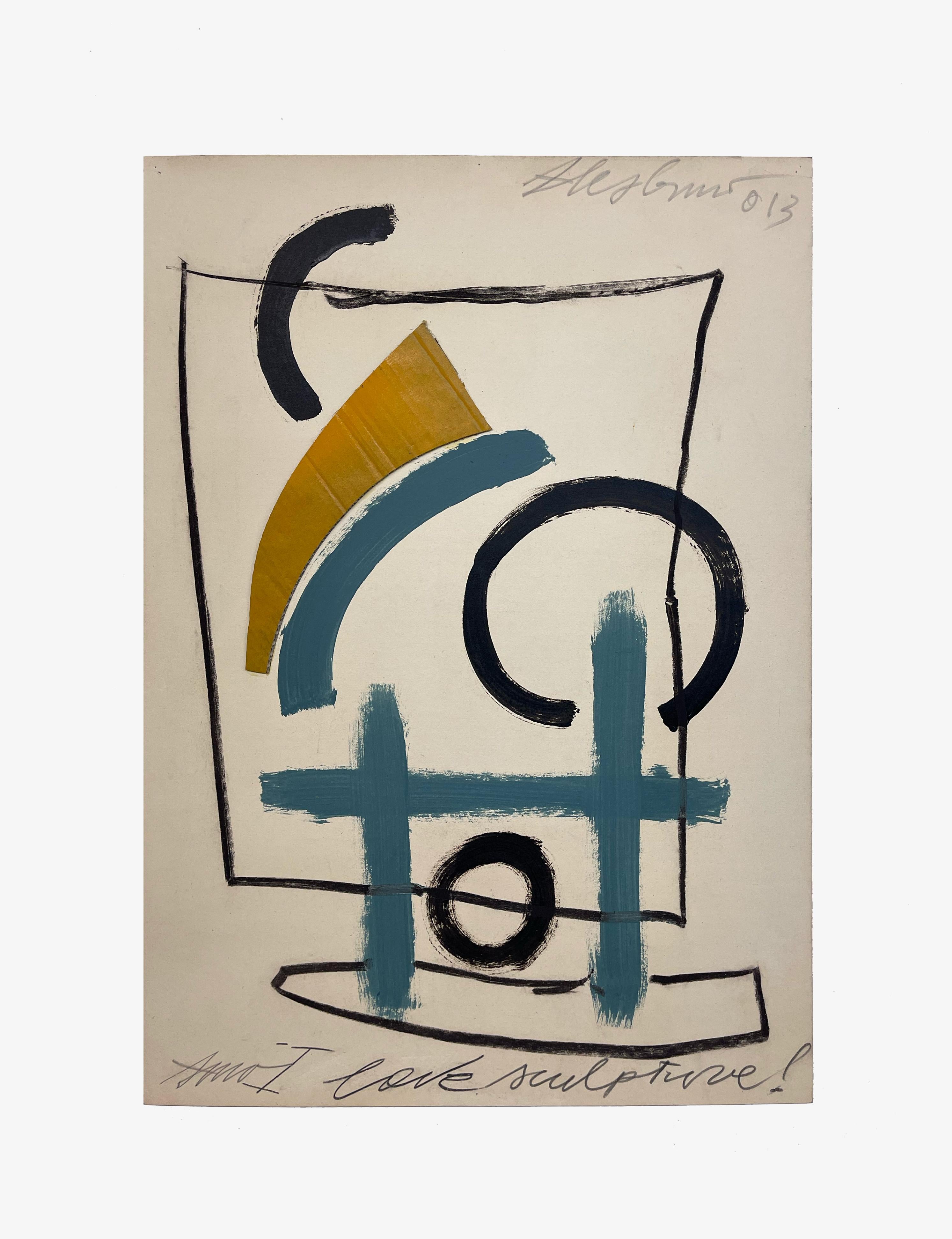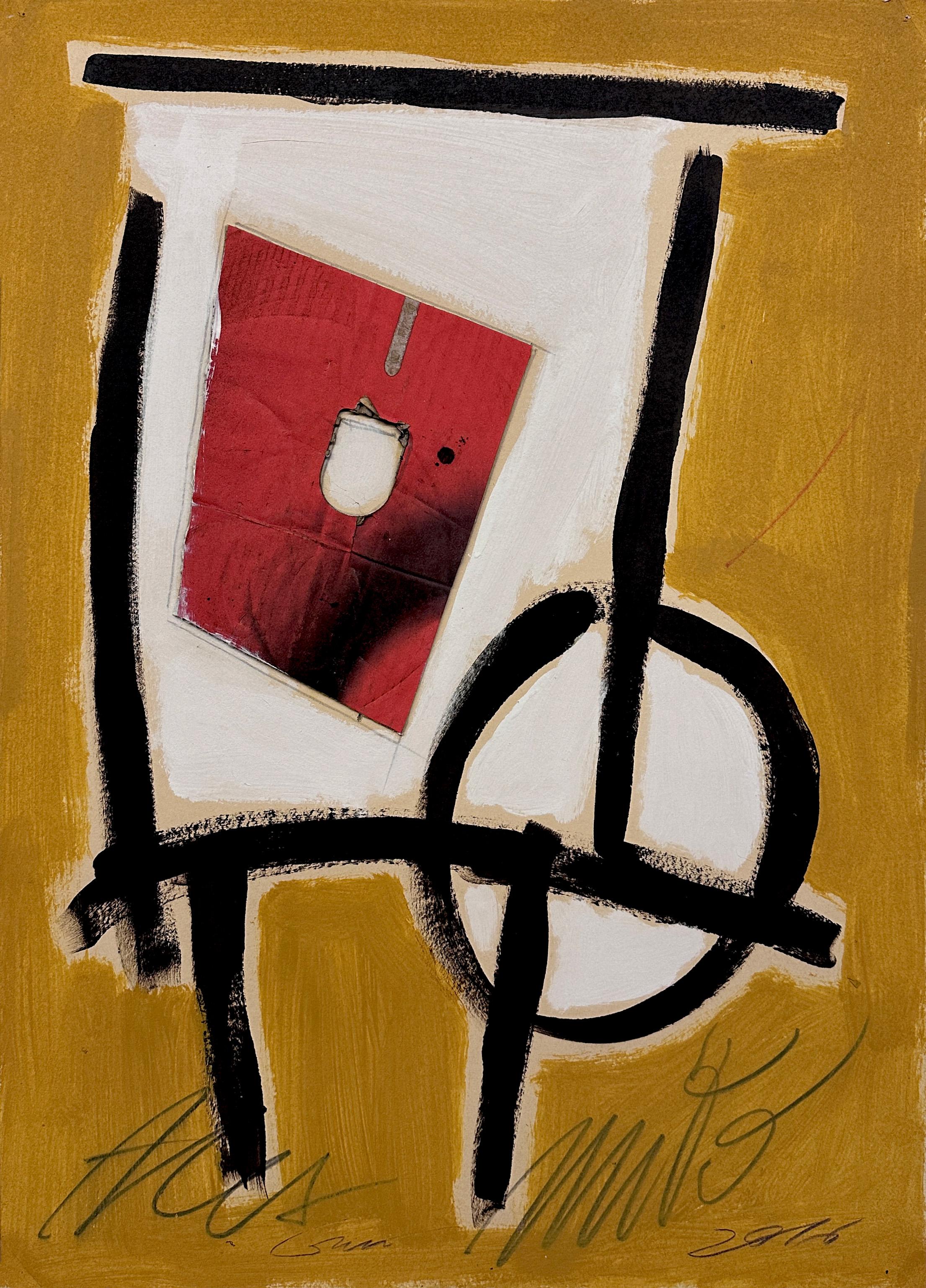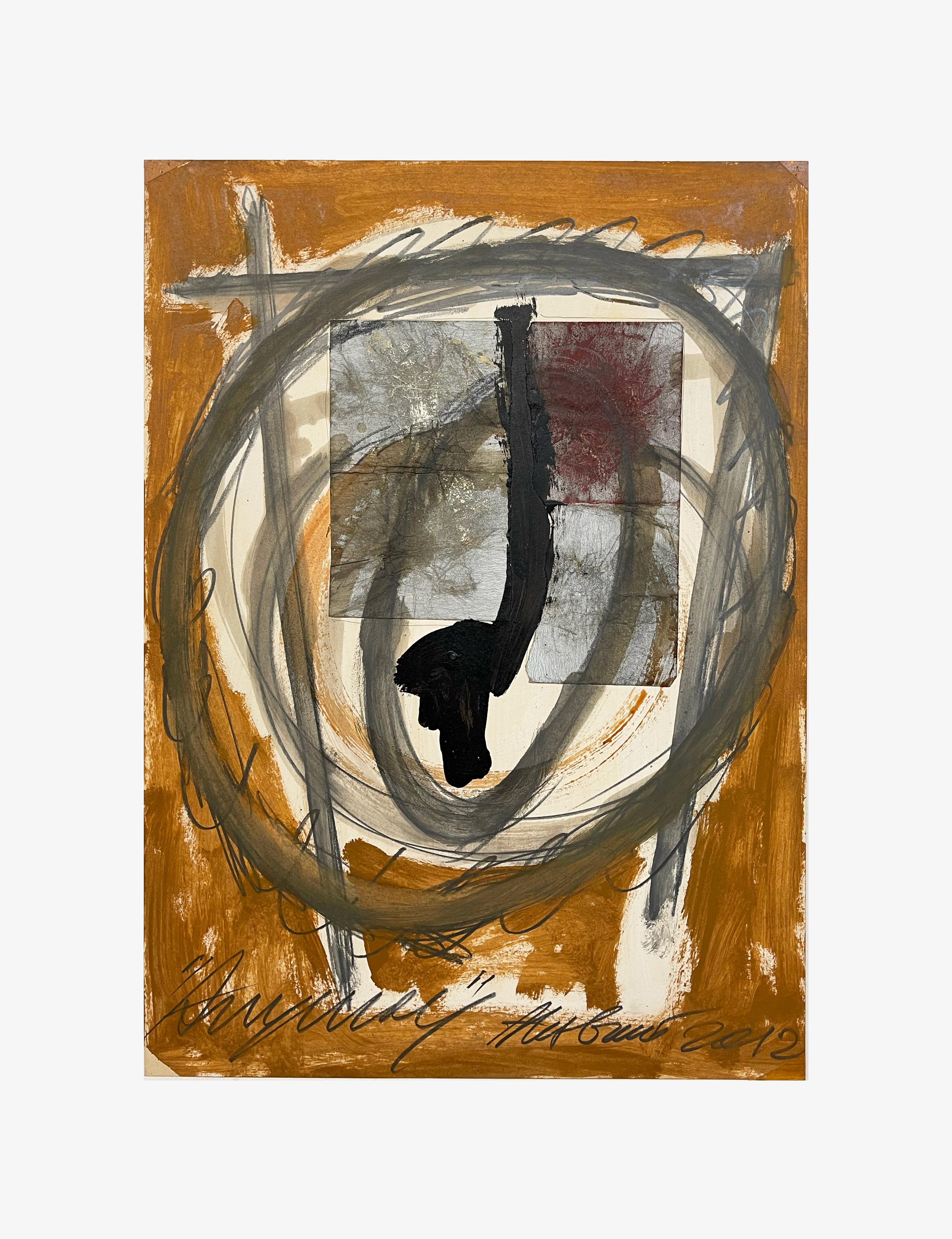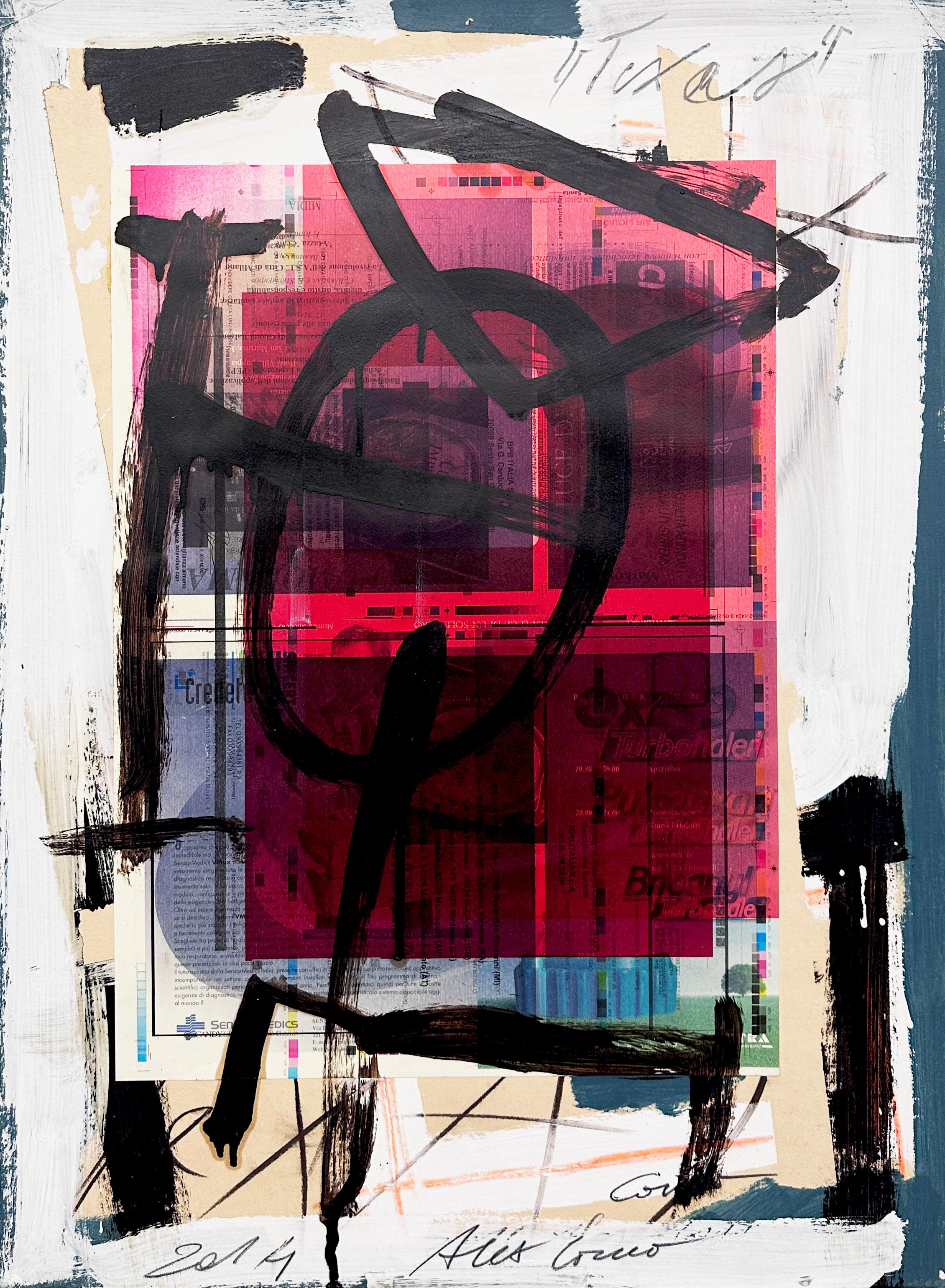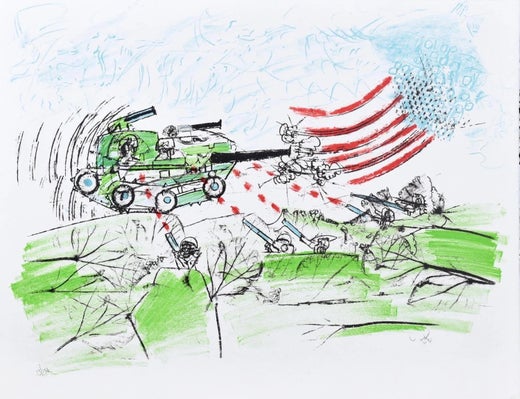Roberto MattaFoot Musik. 1990
1990
About the Item
- Creator:Roberto Matta (1911-2002, Chilean)
- Creation Year:1990
- Dimensions:Height: 30.71 in (78 cm)Width: 29.93 in (76 cm)
- Medium:
- Movement & Style:
- Period:
- Condition:
- Gallery Location:Malmo, SE
- Reference Number:1stDibs: LU328744462
Roberto Matta
“The function of art,” the Surrealist Roberto Matta once stated, “is to unveil the enormous economic, cultural and emotional forces that materially interact in our lives and that constitute the real space in which we live.” In his paintings, Matta sought to expose those forces through the Surrealist practice of automatism, creating work in a free-associative state intended to conjure the unconscious.
After studying architecture in his native Chile, Matta, then 22, chose to pursue the field in Paris, where he mingled with stars of the avant-garde like Gertrude Stein, Salvador Dalí and Walter Gropius. In the late 1930s, he abandoned Paris, together with his job at Le Corbusier’s studio and (for a time) his career, for modern art’s new epicenter, New York City. There, he became a colleague of art legends like Marcel Duchamp and Arshile Gorky.
Although celebrated primarily for his work as a painter, Matta was an equally talented furniture designer. His furniture pieces, like his artworks, are the stuff of dreams. The back of his totem chair, for example, is composed of smiling, cartoonish creatures stacked on top of each other. In his MAgriTTA armchair, the top half of a plush green apple sticks out of large black bowler in homage to its namesake, the Belgian Surrealist René Magritte.
But perhaps the piece that most truly embodies his artistic philosophy is his 1966 Mallite modular system: a collection of spongy, undulating sofas and lounges that can be fitted together to form a puzzle-like room divider. The work, an original edition of which is in MoMA’s permanent collection, has in recent decades been a hard-to-find collectors’ item — until 2019, when Italian design brand Paradisoterrestre issued a reedition, available through Duplex.
Browse Roberto Matta's paintings and furniture designs on 1stDibs.
- ShippingRetrieving quote...Ships From: Malmo, Sweden
- Return PolicyA return for this item may be initiated within 14 days of delivery.
- Trois bleus en diagonale.By James CoignardLocated in Malmo, SEAcquired directly from the artist. Unique artwork. Artwork size: 9,5 x 17 cm. Frame size: 27 x 34 cm Frame in silver. Museum glass anti-reflective. Free shipment worldwide. “With ju...Category
Early 2000s Abstract Mixed Media
MaterialsMixed Media
- Au bout, la lumièreBy Philippe HuartLocated in Malmo, SEArtwork size: 100x70 cm Frame size 116x86 cm Signed, titled and dated on the verso. Acquired directly from the artist. Free shipment worldwide. Working on a variety of perceptual ...Category
2010s Abstract Abstract Drawings and Watercolors
MaterialsPaper, Pen, Graphite
- Le jour se lèveBy Philippe HuartLocated in Malmo, SESigned, titled and dated on the verso. Acquired directly from the artist. Free shipment worldwide. Working on a variety of perceptual levels, Philippe Huart lets one visit his intim...Category
2010s Abstract Abstract Drawings and Watercolors
MaterialsPaper, Pen, Graphite
- Foot MusikBy Roberto MattaLocated in Malmo, SEArtwork size: 56 x 58 cm. Frame size: 76 x 78 cm. Free shipment worldwide. Archive number (P90/36) Acquired directly from the artist. “The heart is an eye,” writes Nobel laureate Octavio Paz in an essay on Matta’s paintings. Matta creates a world coloured both by a sunny faith in the future and by visions of impending doom. Roberto Sebastian Echaurren Antonio Matta, who died aged 91 on 23 November 2002, was born in Santiago, Chile, on 11 November 1911 into a family with Spanish, French and Basque roots, and raised in an atmosphere of religiosity. By the age of 21 he had graduated and begun work as an architect, but his leisure time he devoted to sketching and painting. In 1933 he travelled to Europe for the first time, visiting Greece, Yugoslavia, Italy and other countries, and subsequently taking the initiative to collaborate with the architect, Le Corbusier. As time passed, however, Matta’s enthusiasm for a career in architecture waned, and he began to devote himself full-time to art, making early acquaintances with surrealists such as Max Ernst, Salvador Dalí, André Breton and others. Between 1939 and 1948 Matta, like many of his artistic contemporaries, lived in self-imposed exile in the USA, but, after almost 10 years’ absence from Europe, he returned to make first Rome and then, a few years later, Paris his home. Throughout most of the rest of his life Matta commuted between his studio in Paris and his creative refuge in the monastery outside Rome. And it is here, in Italy, that he produced his greatest paintings. Matta’s first retrospective in Sweden was organised in 1956 when his works were exhibited in what was then Galerie Colibri – run by, among others, the artist C O Hultén at number 36 Södra Förstadsgatan in Malmö, Sweden. This was also the time when Matta began to collaborate with poets and other artists in Sweden. He produced the illustrations for Lasse Söderberg’s first anthology of poems, Akrobaterna (“The Acrobats”), published in 1955, and was also responsible for the cover of the Swedish art and literary magazine Salamander. In 1959 the first museum exhibition of Matta’s work in Europe was arranged at the Museum of Modern Art (Moderna Museet) in Stockholm. Held under the aegis of Pontus Hultén, it was entitled “Fifteen Forms of Doubt” and included 15 or so gigantic paintings...Category
1990s Surrealist Abstract Drawings and Watercolors
MaterialsMixed Media
- Foot MusikBy Roberto MattaLocated in Malmo, SEFrame size 76x78 cm. Free shipment worldwide. Acquired directly from the artist. Archive number (P90/41) “The heart is an eye,” writes Nobel laureate Octavio Paz in an essay on Matta’s paintings. Matta creates a world coloured both by a sunny faith in the future and by visions of impending doom. Roberto Sebastian Echaurren Antonio Matta, who died aged 91 on 23 November 2002, was born in Santiago, Chile, on 11 November 1911 into a family with Spanish, French and Basque roots, and raised in an atmosphere of religiosity. By the age of 21 he had graduated and begun work as an architect, but his leisure time he devoted to sketching and painting. In 1933 he travelled to Europe for the first time, visiting Greece, Yugoslavia, Italy and other countries, and subsequently taking the initiative to collaborate with the architect, Le Corbusier. As time passed, however, Matta’s enthusiasm for a career in architecture waned, and he began to devote himself full-time to art, making early acquaintances with surrealists such as Max Ernst, Salvador Dalí, André Breton and others. Between 1939 and 1948 Matta, like many of his artistic contemporaries, lived in self-imposed exile in the USA, but, after almost 10 years’ absence from Europe, he returned to make first Rome and then, a few years later, Paris his home. Throughout most of the rest of his life Matta commuted between his studio in Paris and his creative refuge in the monastery outside Rome. And it is here, in Italy, that he produced his greatest paintings. Matta’s first retrospective in Sweden was organised in 1956 when his works were exhibited in what was then Galerie Colibri – run by, among others, the artist C O Hultén...Category
1990s Surrealist Drawings and Watercolor Paintings
MaterialsGouache, Mixed Media
- SF 89-153.By Sam FrancisLocated in Malmo, SEArtwork size: 67 x 51 cm. Frame size: 112 x 97 cm. Free shipment worldwide. Archive number SF 89-153 in the Sam Francis Foundation. Stamped with the Sam Francis Estate logo and stamped signature on verso. Sam Francis’s paintings are a journey into a dream, a voyage into the landscapes of the soul where colours are lights on fire. Alongside names such as Jackson Pollock, Willem de Kooning and Franz Kline, Sam Francis is an artist who has succeeded in demonstrating a total mastery of abstract expressionism’s impassioned and spontaneous genre. The explosions of colour – red, blue, green and yellow – the streaks, strokes and bold lines of his pictures are the physical synthesis of the deepest crevices of the soul. His colours create rhythmical motifs that, characteristically enough, can be called the “musicality” of his paintings. The work of Sam Francis provides a visible meeting place for the conscious and the unconscious. His pictures are the cross-fertilisation of what has already been experienced with what exists still only as desire, a struggle between melancholy and merrymaking. Influenced by C.G. Jung, the father of psychoanalysis, Sam Francis spent a large portion of his life exploring the premise that dreams, instincts and intuition provide, the keys which unlock the mysteries and meaning of our inner lives. He was also fascinated by the four ancient elements – earth, water, air and fire – which developed into a leitmotif in his work. Sam Francis was born in San Mateo in California, USA in 1923. After starting to paint at the age of around twenty, he soon found himself increasingly consumed by the power of art. He spent much of the 1950s in Paris, from where he not only made frequent excursions to a number of European cities, but also embarked on many journeys to South America and Asia. He continued to move from place to place, primarily in the USA and Japan, right up until his death in 1994. Sam Francis’s first...Category
1980s Contemporary Abstract Paintings
MaterialsPaper, Acrylic
- EggsBy Alex CornoLocated in Milano, ITEggs 2016 Acrilico e grafite su cartoncino CM 49x34 Con la mano e con fuoco, sul metallo. Con la mano e col pensiero sulla carta. Il disegno è inscindibile dalla scultura e non pu...Category
2010s Abstract Mixed Media
MaterialsMixed Media, Acrylic, Graphite
- I love - I love sculptureBy Alex CornoLocated in Milano, ITI LOVE - I LOVE SCULPTURE 2013 Collage on cardboard CM 70x50 With hand and with fire, on metal. With hand and thought on paper. Drawing is inseparable from sculpture and cannot b...Category
2010s Abstract Mixed Media
MaterialsMixed Media, Acrylic, Illustration Board
- MitoBy Alex CornoLocated in Milano, ITMito 2015 Collage e acrilico su carta CM 70x50 Con la mano e con fuoco, sul metallo. Con la mano e col pensiero sulla carta. Il disegno è inscindibile dalla scultura e non può esse...Category
2010s Abstract Mixed Media
MaterialsGlue, Mixed Media, Acrylic, Paper
- AnywayBy Alex CornoLocated in Milano, ITAnyway 2012 Collage on cardboard CM 70x50 Artwork featured in the "Drawings" section of the monograph on Alex Corno published by Silvia publishing. With hand and with fire, on me...Category
2010s Abstract Mixed Media
MaterialsMixed Media, Acrylic, Illustration Board, Glue
- Nice fallBy Alex CornoLocated in Milano, ITNICE FALL 2013 Collage su cartoncino CM 70x50 Con la mano e con fuoco, sul metallo. Con la mano e col pensiero sulla carta. Il disegno è inscindibile dalla scultura e non può essere meno importante. Alex Corno nei sui disegni su carta arriva all’estrema sintesi della sua ricerca artistica. Gli elementi costitutivi della sua Scultura sono riportati in bi-dimensione in rapidi e istintivi segni/pennellate che riescono a testimoniare il suo rapporto con lo Spazio. Elementi di natura e forma...Category
2010s Abstract Mixed Media
MaterialsMixed Media, Acrylic, Illustration Board, Glue
- TexasBy Alex CornoLocated in Milano, ITTexas 2014 Collage e acrilico su carta CM 70x50 Con la mano e con fuoco, sul metallo. Con la mano e col pensiero sulla carta. Il disegno è inscindibile dalla scultura e non può es...Category
2010s Abstract Mixed Media
MaterialsMixed Media, Acrylic, Paper, Glue
